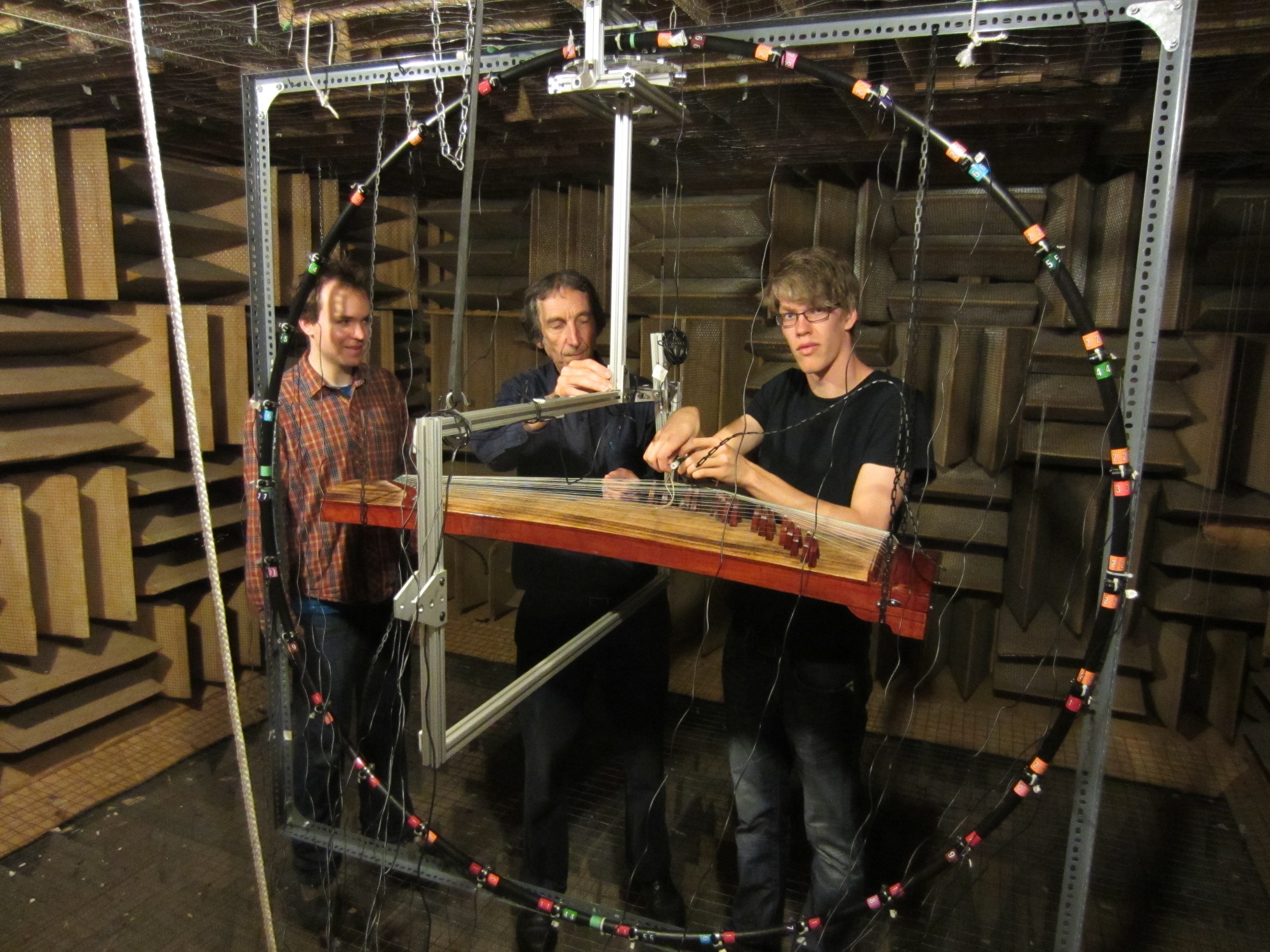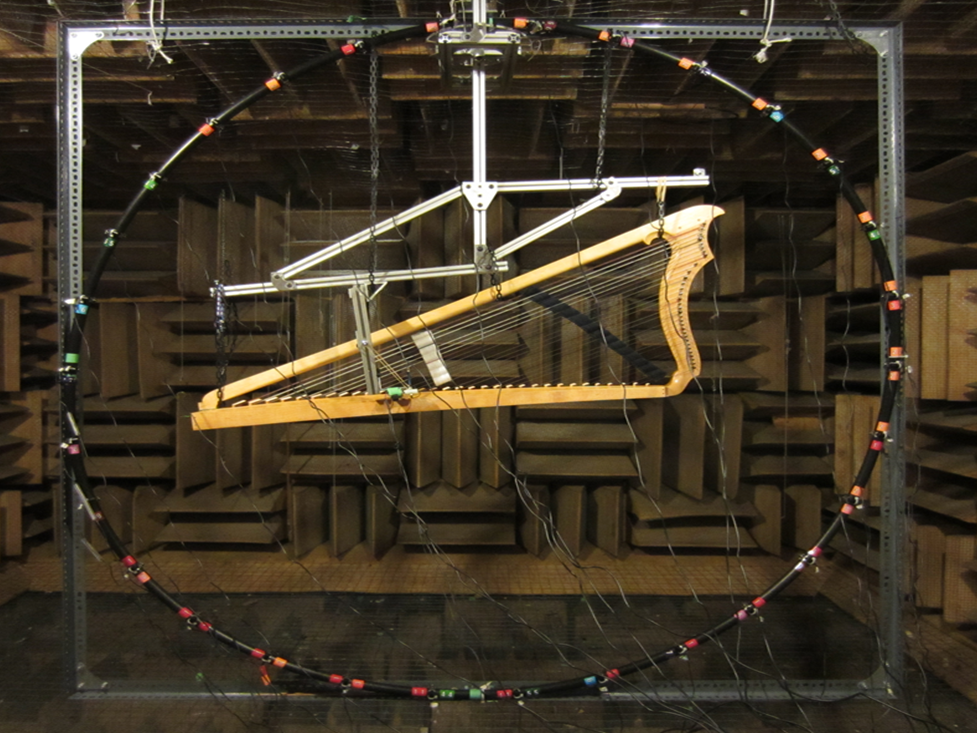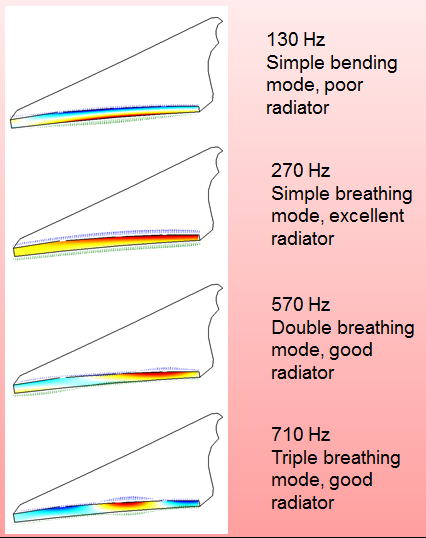Physics 318 - Experimental Acoustics
How do blind people sense their surroundings?
Why do you pluck a guitar but bow a violin? Why are the sounds so poor if you try it the other way around?
Why are native Chinese speakers much more likely to have perfect pitch than speakers of European languages?
How does a violin (guitar, qin, setar etc.) soundbox radiate sound?
Why do some people get sick in an anechoic chamber? (Get to see if you do!)
Physics 318 is a hands-on practical 3-credit class in acoustics. The one hour lecture each week provides just enough theoretical basis to approach and learn from the four hour per week laboratory. There are six formal laboratory exercises, followed by a three week project on a topic to be chosen by each student.
- Introduction to data acquisition – FFTs, experimental control and data analysis with MATLAB.
- Resonance
- Normal vibration modes of structures – finite element modelling with SolidWorks.
- Accelerometry – modal measurements
- Sound radiation – near field, far field.
- Impedance tubes – (analysis of wind instruments)
Project topics include any aspect of acoustics that interests the student. In the past many have involved understudied musical instruments like the cowbell and bowed (woodworking) saw. One student made a Theremin from scratch. Evaluation is on the basis of a 10 minute video; some have made it onto youtube (linked on http://acoustics.phas.ubc.ca). Prerequisites: One of ENPH 259, PHYS 209, PHYS 259.


